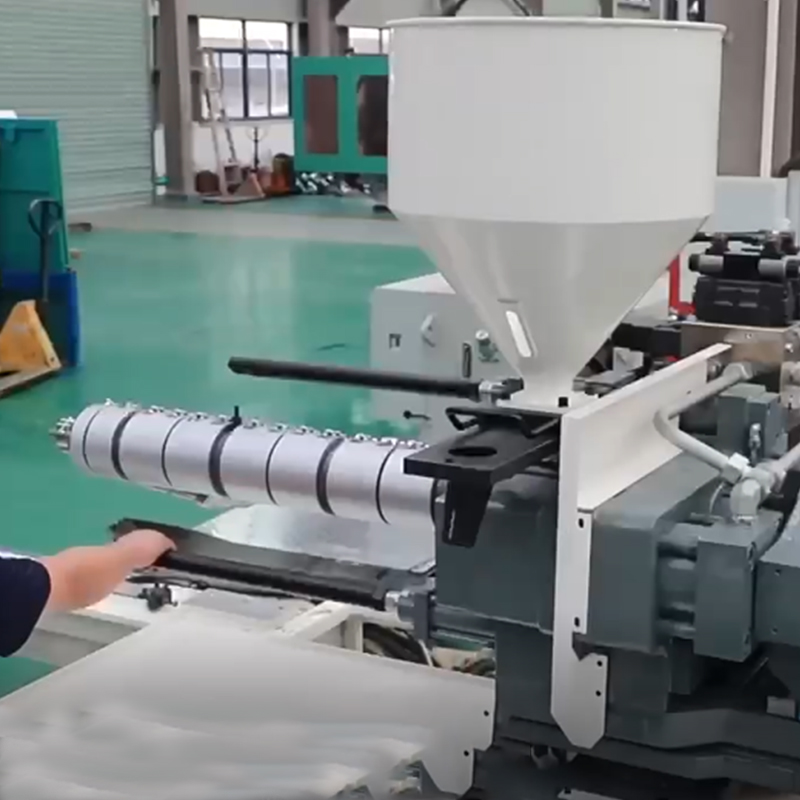The Plastic Thin Space Cup Mould represents an innovation in the manufacturing o...
-

+86-15068654601
-

No.62 Zhao Feng Road, Huangyan, Taizhou, Zhejiang, China

+86-15068654601

No.62 Zhao Feng Road, Huangyan, Taizhou, Zhejiang, China
An automatic plastic injection molding machine is a mechanical system designed to inject molten plastic into a mold cavity to create specific plastic parts. These machines work by melting plastic pellets and then injecting the molten material into a pre-formed mold under high pressure. Once the plastic cools and solidifies, the mold opens, and the part is ejected.

The roots of injection molding can be traced back to the early 19th century when the patent for an injection molding machine was granted to John Wesley Hyatt in 1872. Hyatt's machine used a plunger to force heated plastic into a mold cavity. This invention came about as a response to the growing demand for affordable, mass-produced items, such as buttons, combs, and other consumer goods.
However, it wasn't until the 1950s that injection molding began to be used extensively in industrial manufacturing. This was largely due to advancements in plastic materials and the development of machines capable of applying higher pressures, which allowed for the mass production of more complex plastic parts.
The 1960s marked the beginning of automation in injection molding. Before this era, machines were largely manual or semi-automatic, requiring workers to load plastic pellets and manually eject molded parts. However, as demand for faster and more consistent production grew, manufacturers began to introduce hydraulic presses and early automation technology. These systems were equipped with simple electronic controls and could perform a variety of functions, such as controlling the speed of the injection process and automatically opening and closing the mold.
This shift toward automation drastically improved the speed and precision of the injection molding process. It also reduced the reliance on human labor, helping manufacturers reduce costs and increase output.
In the 1980s, electric injection molding machines began to emerge, replacing their hydraulic counterparts in some applications. Electric machines offered several advantages, including greater energy efficiency, better precision, and quieter operation. With the ability to control the injection speed and pressure with high accuracy, electric machines were well-suited for industries that required intricate, high-precision components.
Electric injection molding machines also became more common due to the growing demand for smaller, lightweight products, particularly in the electronics and automotive industries. These machines allowed manufacturers to create small parts with high precision, such as circuit boards, connectors, and other components used in electronic devices.
The 1990s saw the further refinement of automatic injection molding machines. The introduction of computer numerical control (CNC) and programmable logic controllers (PLC) enabled manufacturers to automate not only the molding process but also the monitoring and control of the machines. These advances allowed for real-time monitoring of key parameters such as temperature, pressure, and injection speed.
In addition, the development of multi-cavity molds and robotic ejection systems made it possible to produce multiple parts simultaneously in a single cycle, greatly increasing productivity. Automated systems could now handle complex tasks such as mold cleaning, part inspection, and packaging, reducing the need for manual labor and improving overall operational efficiency.
In the 2000s, the focus of automatic plastic injection molding machines shifted toward smart manufacturing. The integration of Industry 4.0 technologies, such as Internet of Things (IoT) connectivity, artificial intelligence (AI), and advanced sensors, allowed manufacturers to achieve higher levels of automation and real-time data collection. Modern injection molding machines can now be connected to networks, allowing operators to remotely monitor and adjust machine parameters, as well as predict maintenance needs before breakdowns occur.
Additionally, 3D simulation and virtual prototyping technologies have enabled engineers to design and test injection molding processes before they even begin production. This reduces the risk of defects and material waste, significant savings in both time and resources.